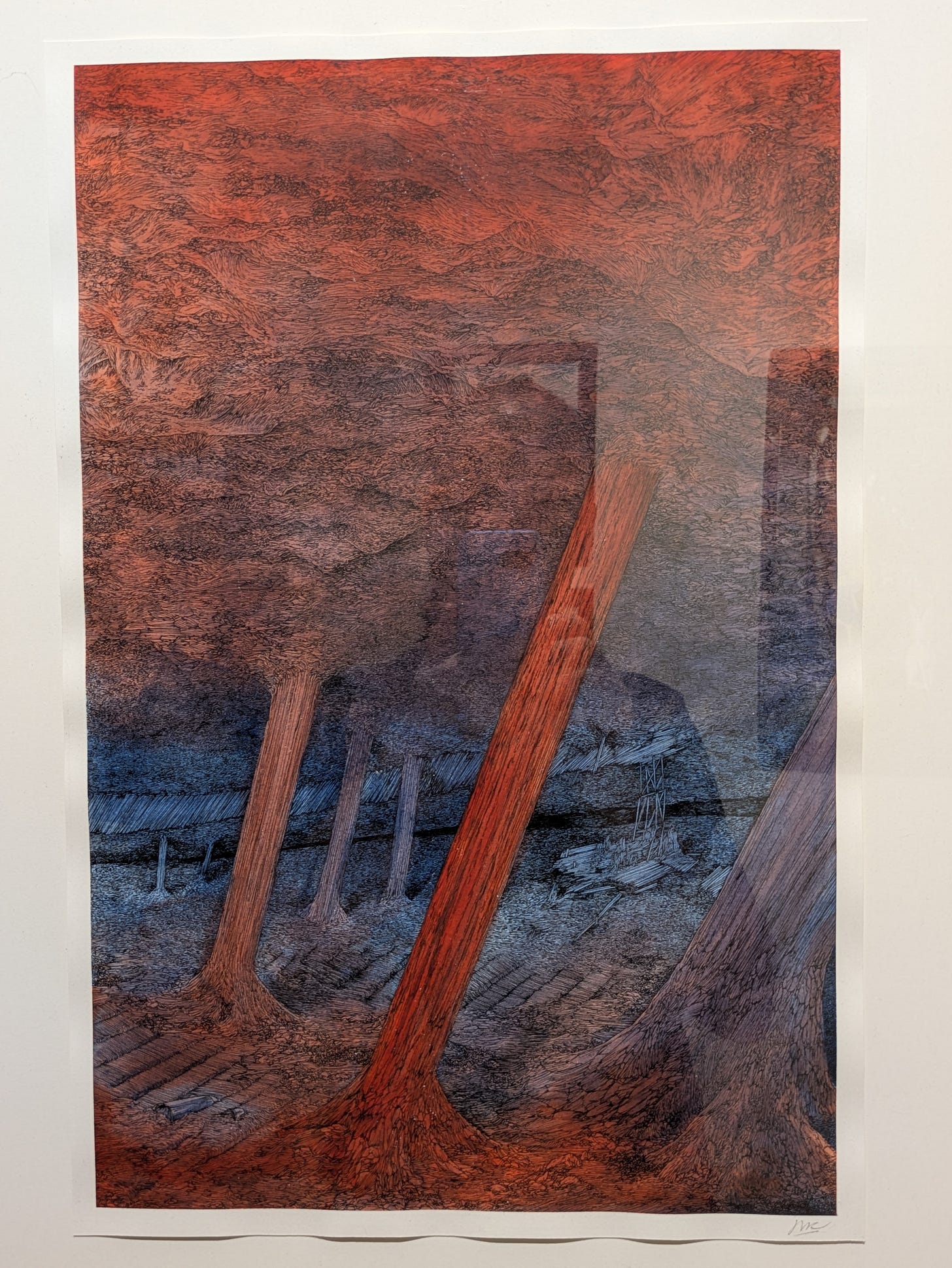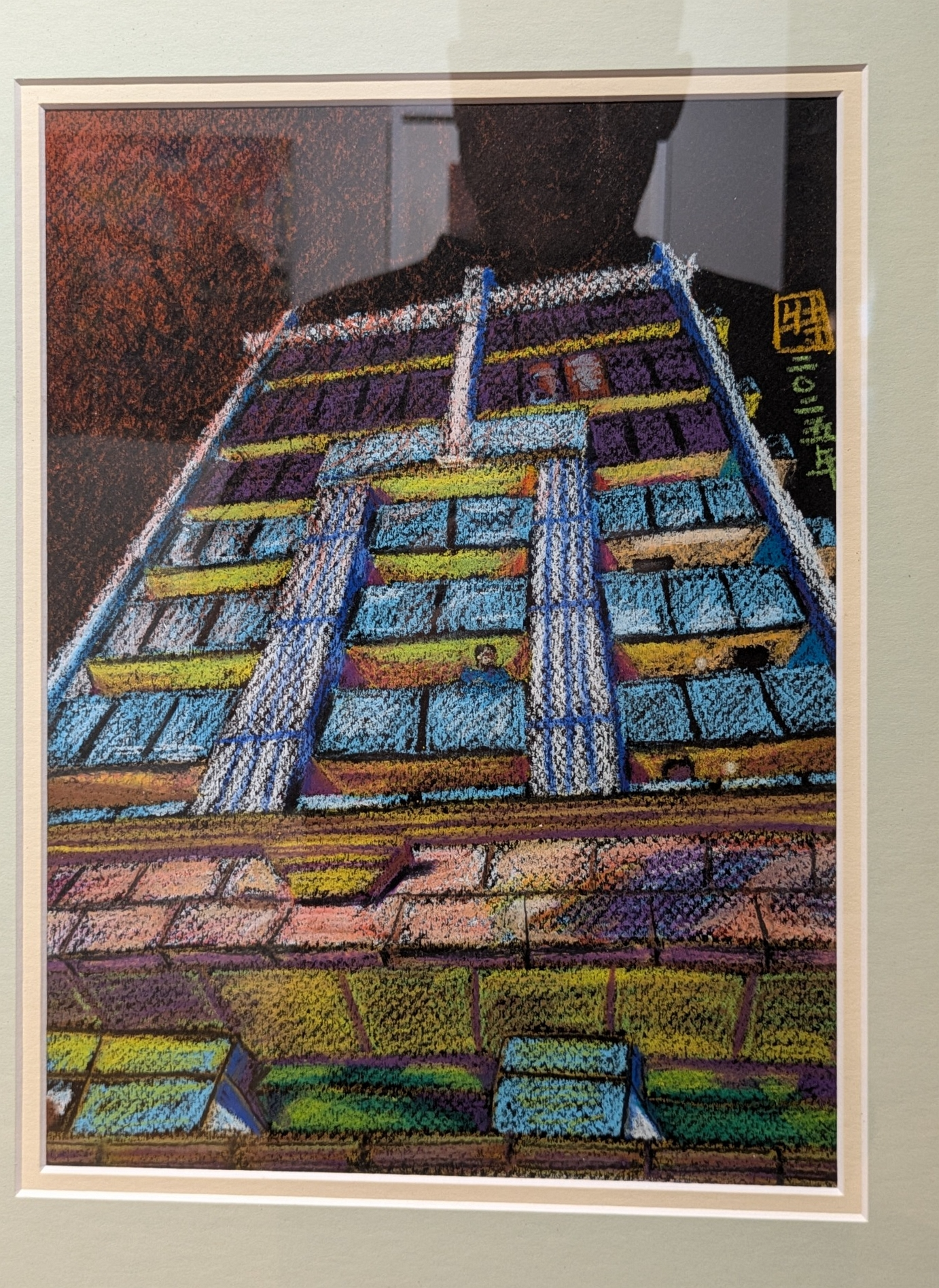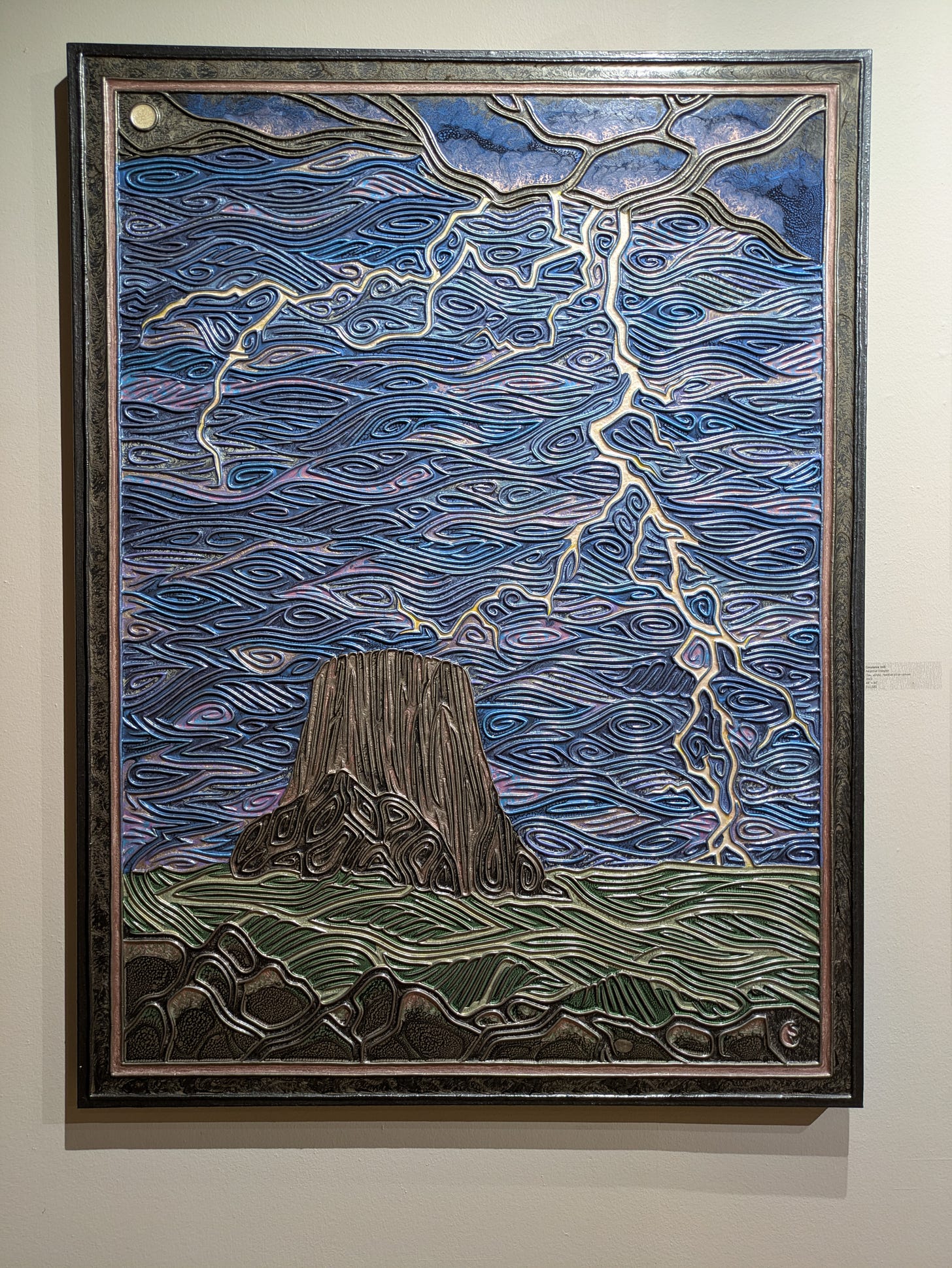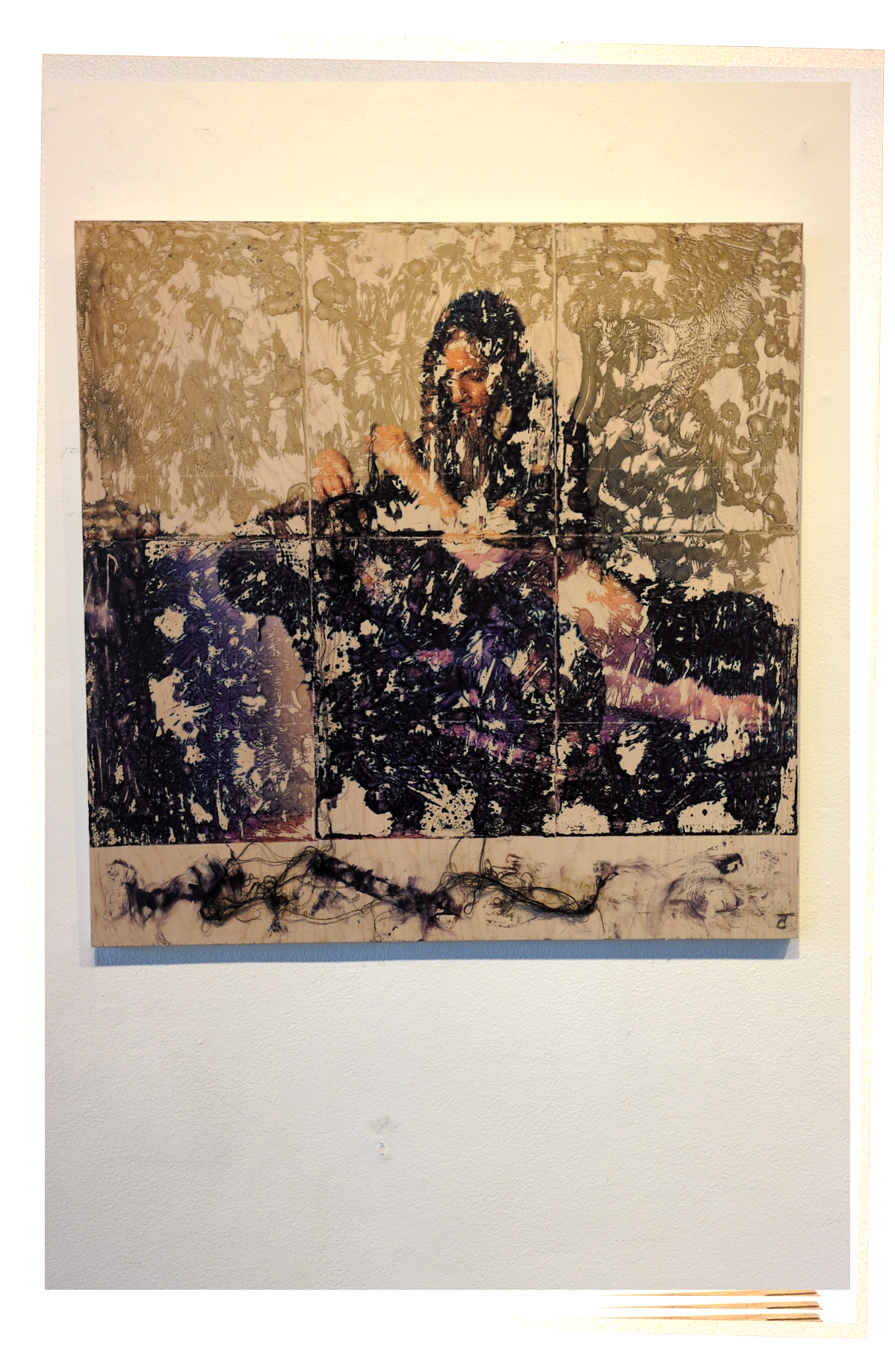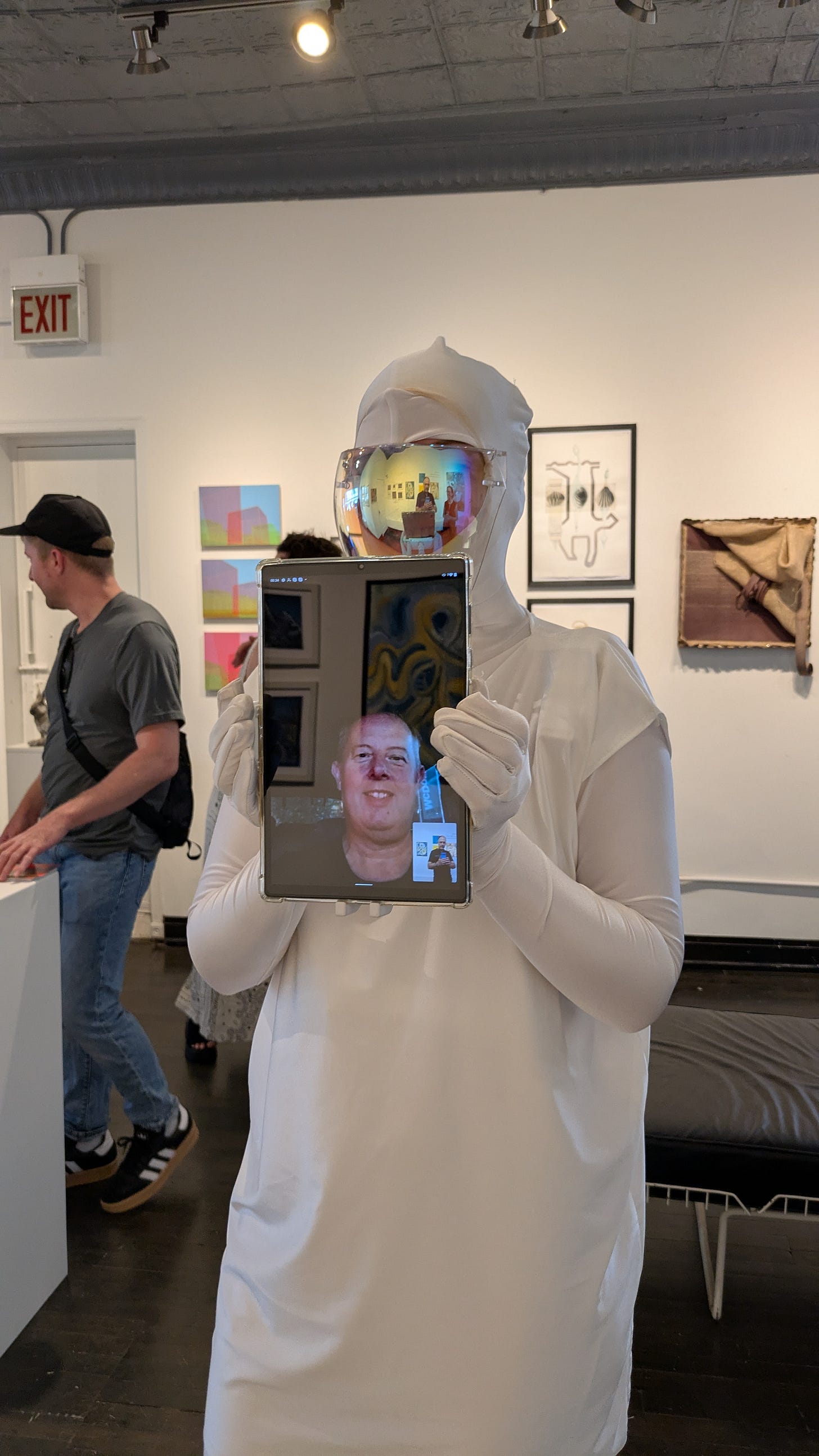This past Third Friday at the Bridgeport Art Center felt like a big deal, with the combination of the usual open studios on the day and the opening of a big group show, “The Landscape is Changing.” There were big crowds that looked like Chicago, and a lot of energizing serendipity as I wandered through the show and on through the labyrinthine corridors of studio cubicles with work on display in every direction.
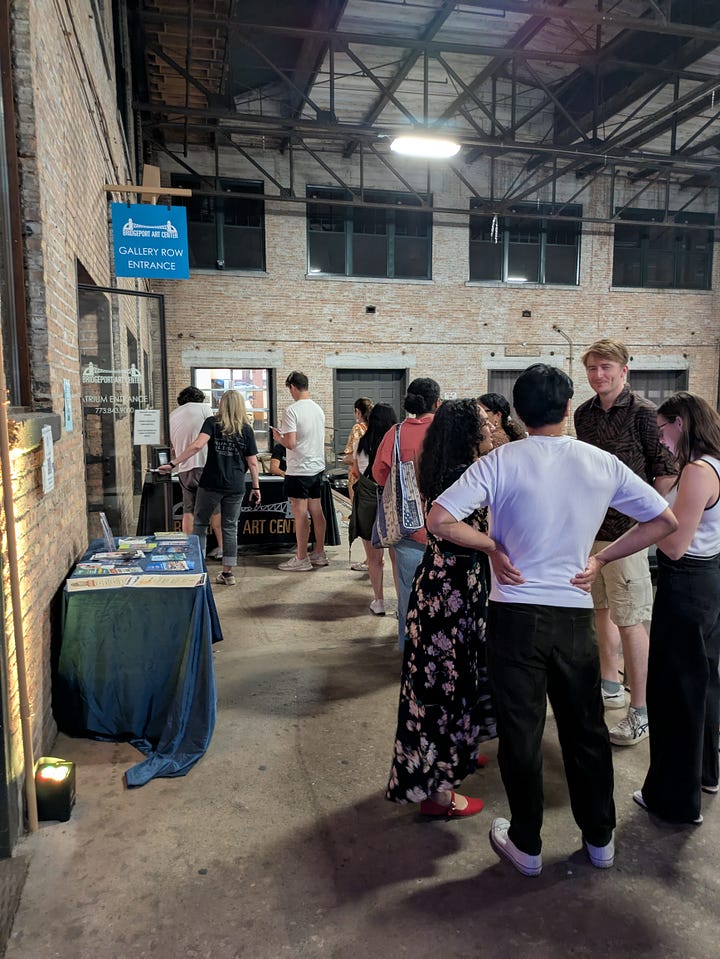
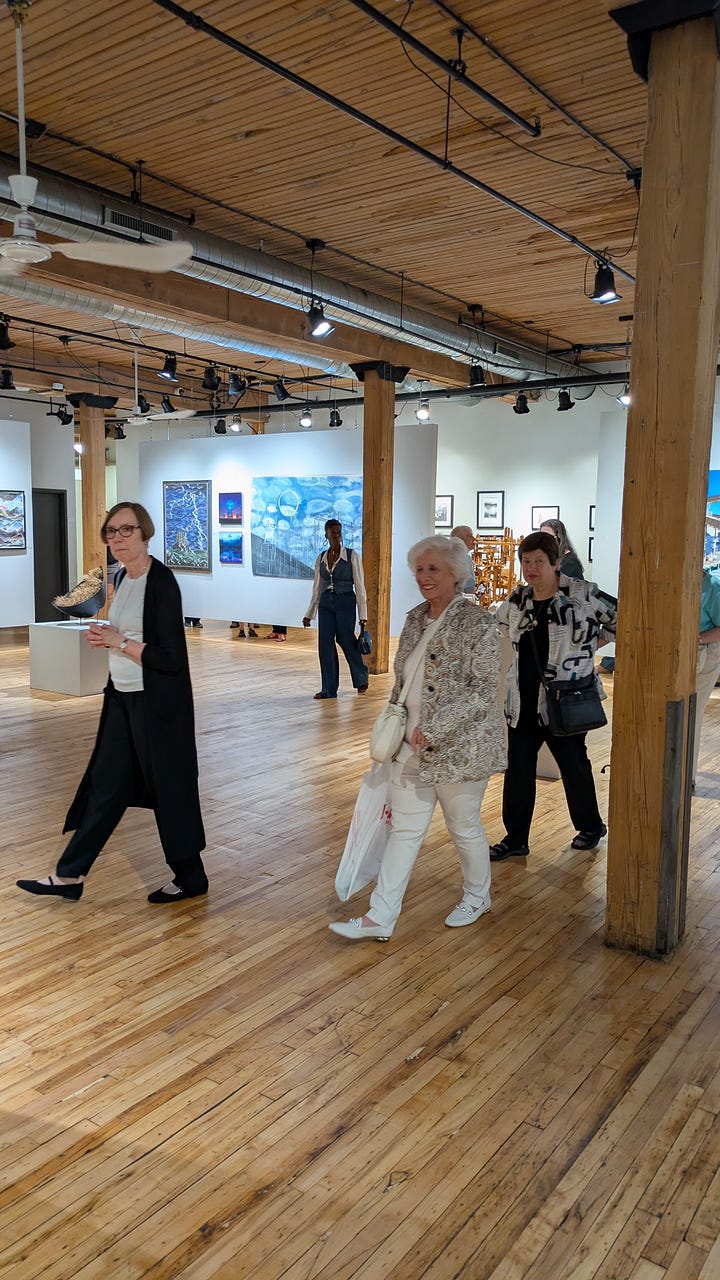
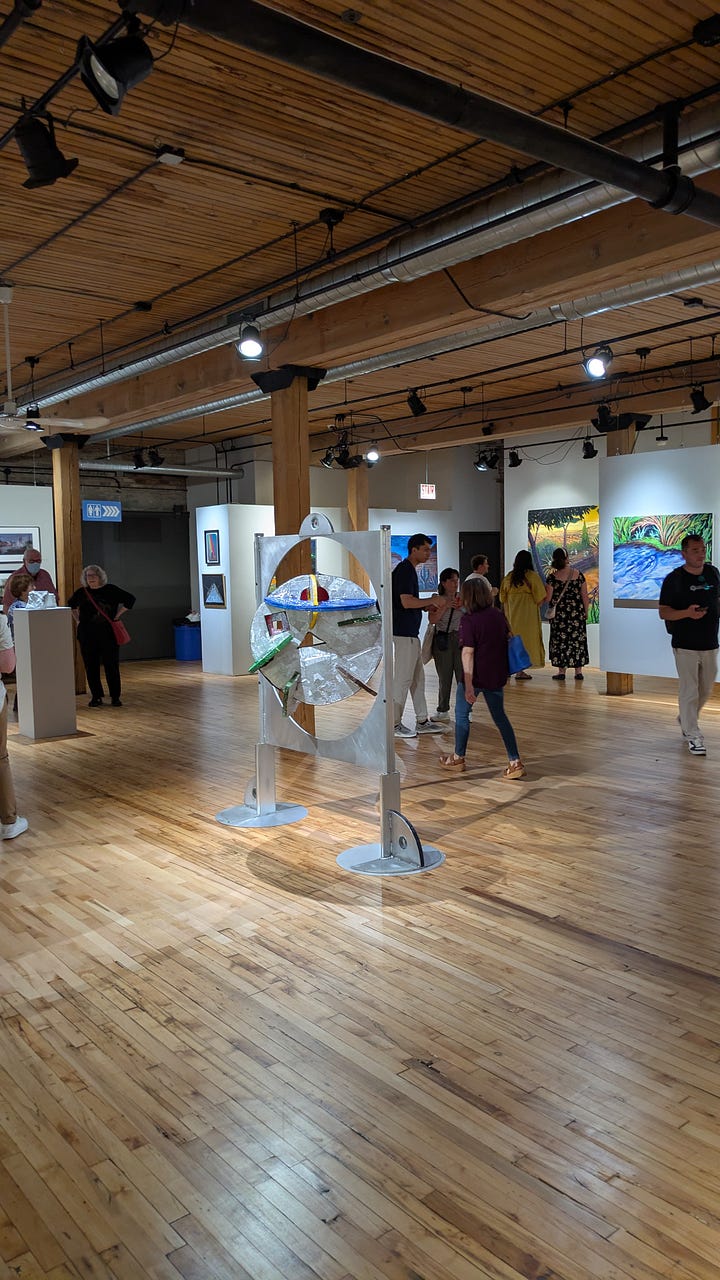
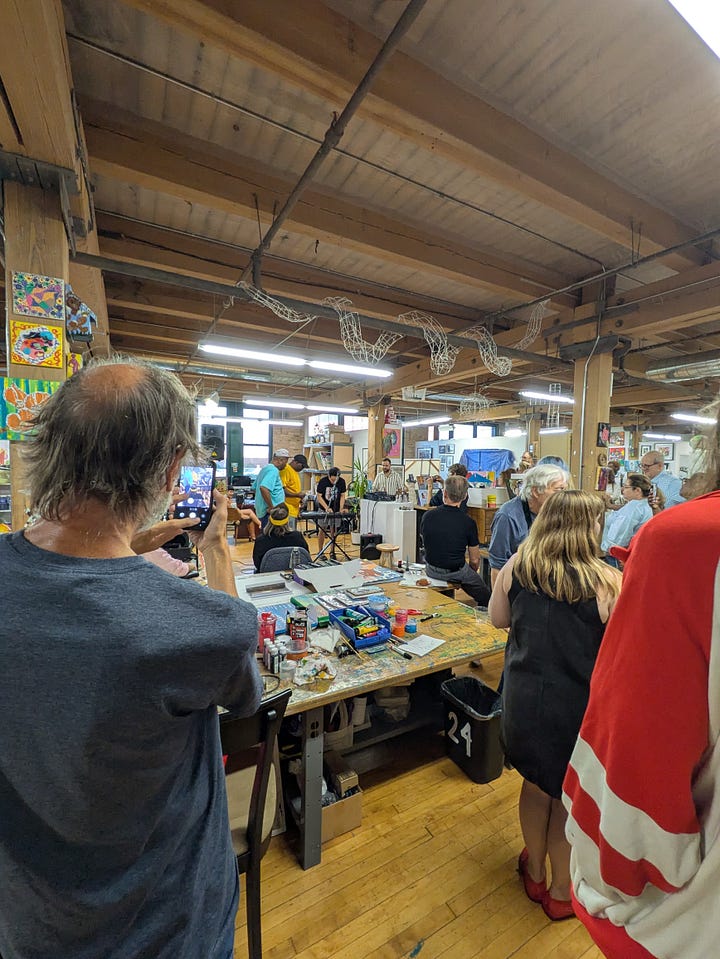
I also visited the Zhou B Art Center and the Heritage Museum of Asian Art, as well as the opening of “Luminosity” a group show and summer arts program at Oliva Gallery in Logan Square.
Over the course of the evening the pieces I was drawn to again and again turned out to be works of pencil, crayon and other demotic implements on paper. I didn’t seek them out, they drew me in. Something of the mix of intimacy and intensity, meditation and physicality required to produce them remained with them and powered them. The sense of meaning built through small movements and marks was similar to the one felt in my trip to the SAIC’s MFA thesis show.
The show at the Bridgeport Art Center is large, with a hundred participants named on its web page:
Lucie Van der Elst’s Top-Down-web is pen and watercolor. It confuses stability and chaos, up and down, flow and flood, with many little dramas hidden the details. A secular Inferno, Gustave Doré via Da Vinci and Albrecht Durer.
Temo’s Hamamatsu Nights is crayon, it depicts a colorful moment in an exciting city, but makes it clear that we’re staying in tonight. The only company is a ghost, a reflection or a melancholy soulmate.
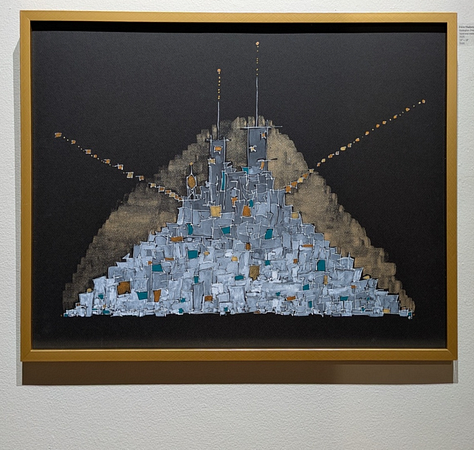
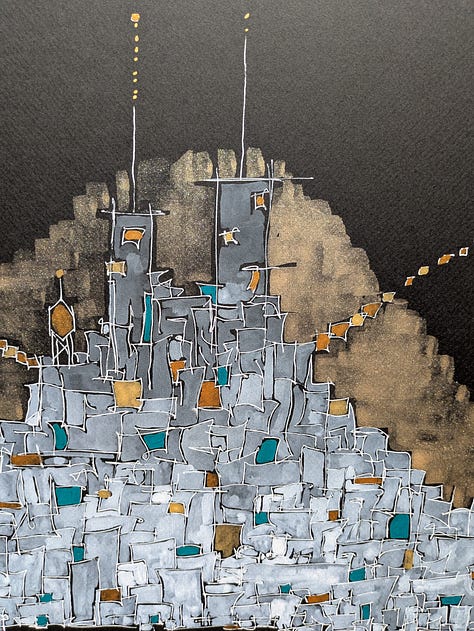
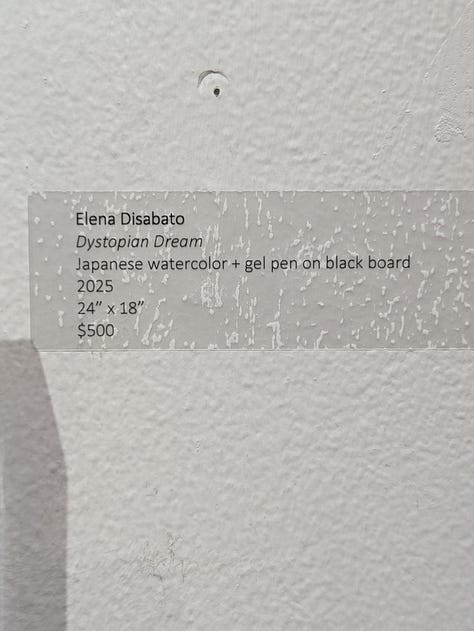
Elena Disabato’s Dystopian Dream is gel pen and Japanese watercolor. Shining city, industrial ruin, or favela in a drunken vision.
I was also glad to see a work by Constance Volk, who I’ve been following for a while:
It’s acrylic paint over a clay substructure, which forms labyrinthine paths, designed to be traced by fingers, for the purpose of forming and solidifying memories of a place and of the work that captures it.
Seven Sisters by Alexia Trzyna was a striking room-size sculpture in ceramic and wood:
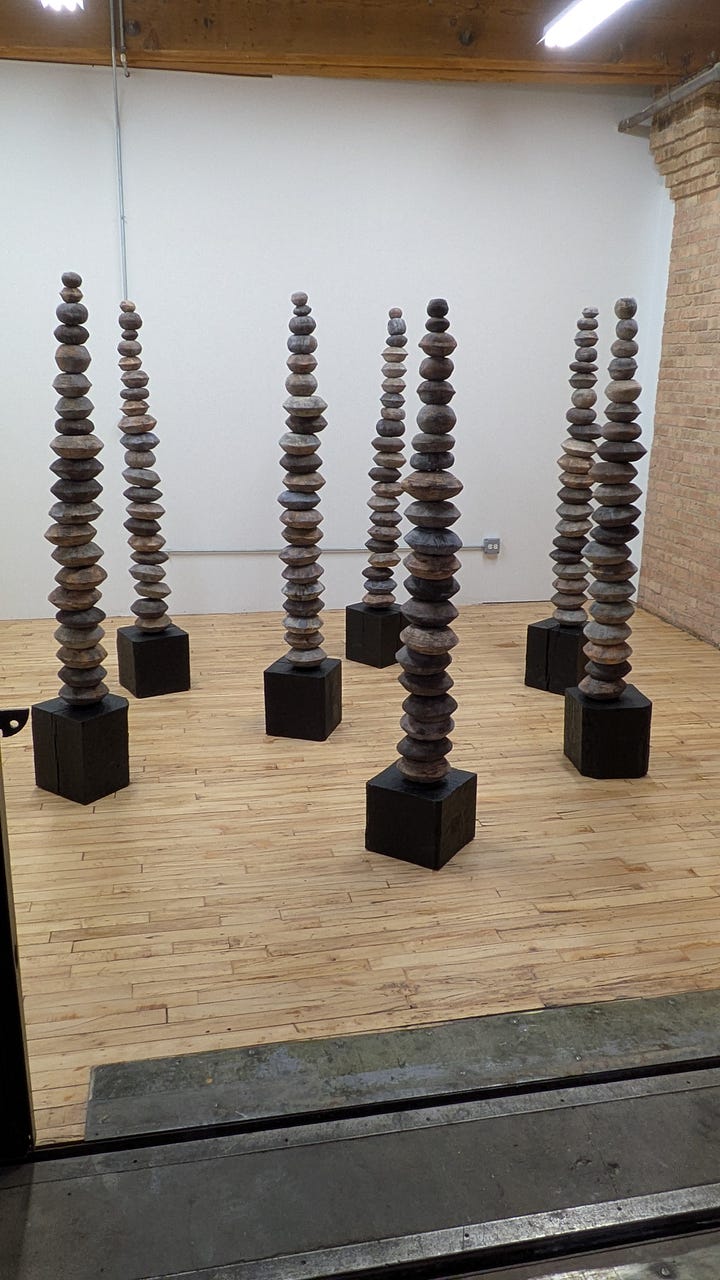
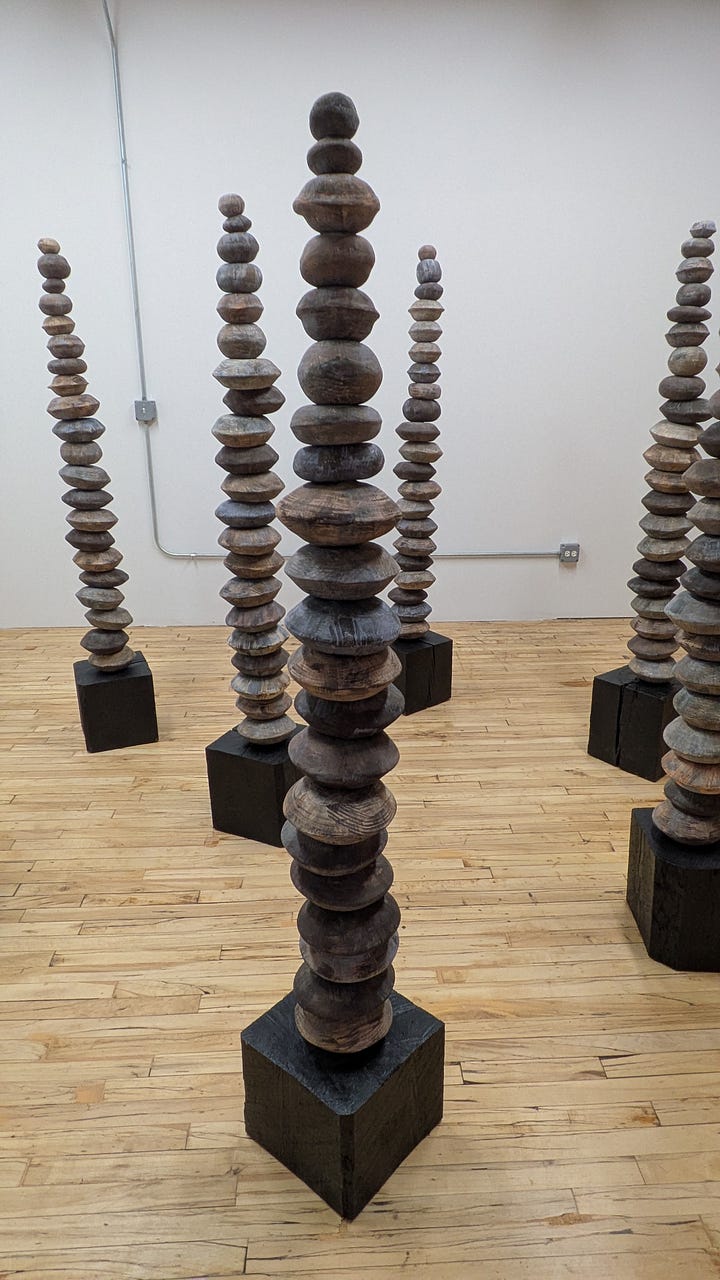
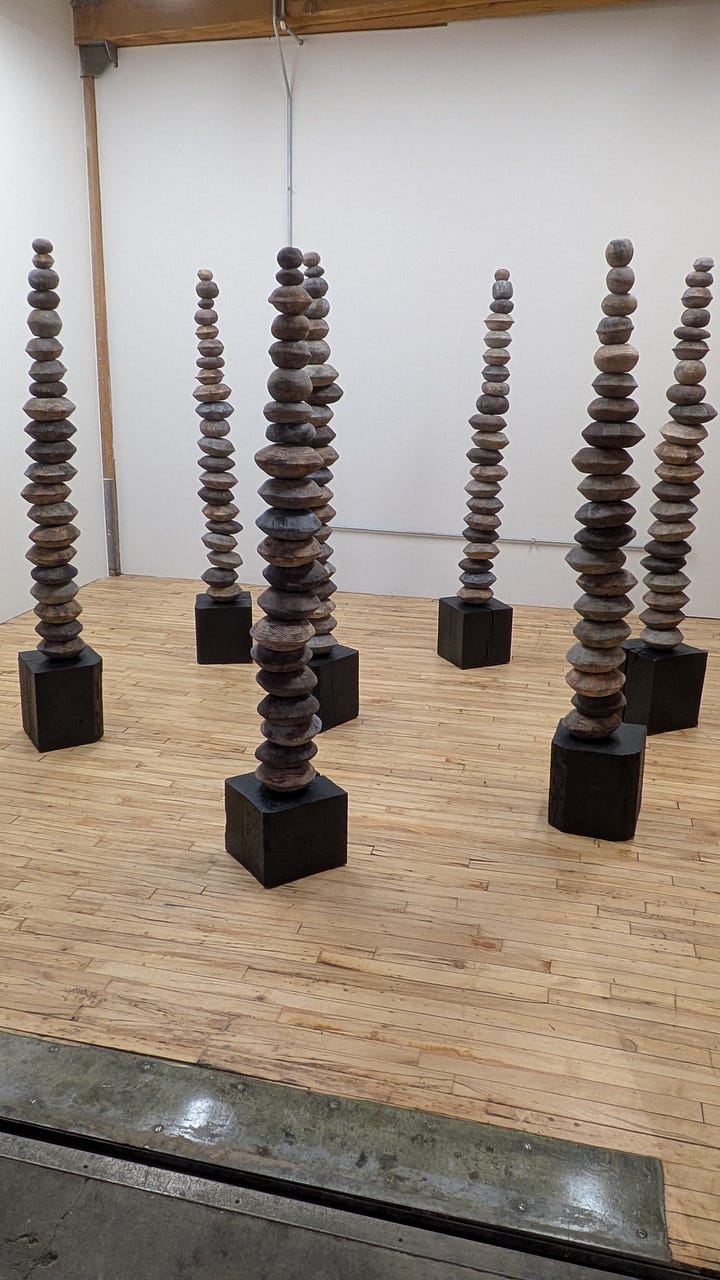
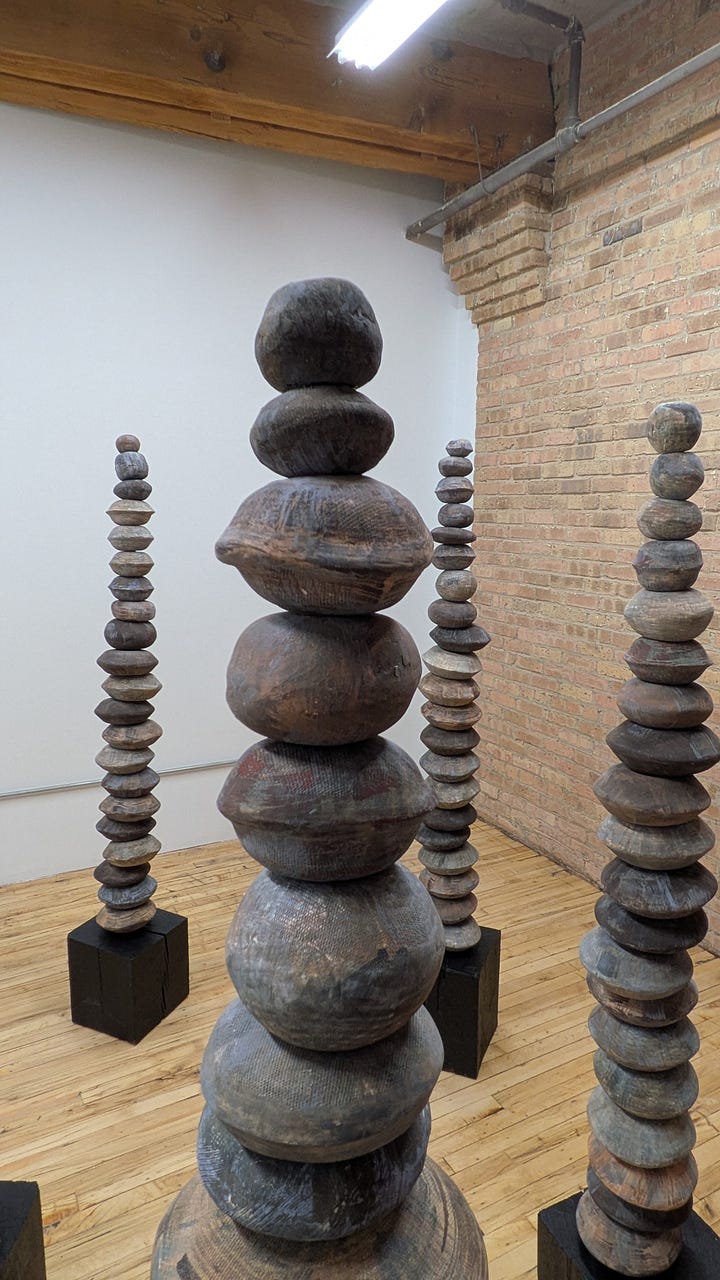
Like the Ryōan-ji rock garden in Kyoto, it seemed impossible to see all towers at the same time, they reveal and re-group themselves as the observer moves to explore them.
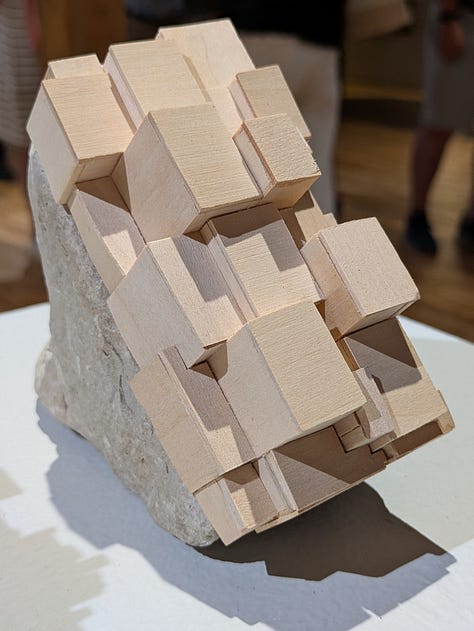
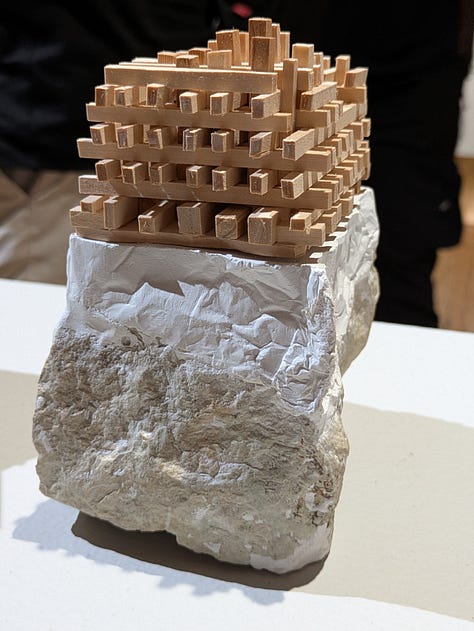
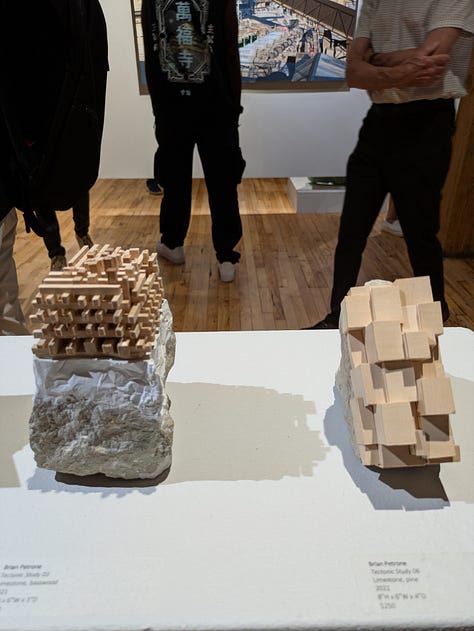
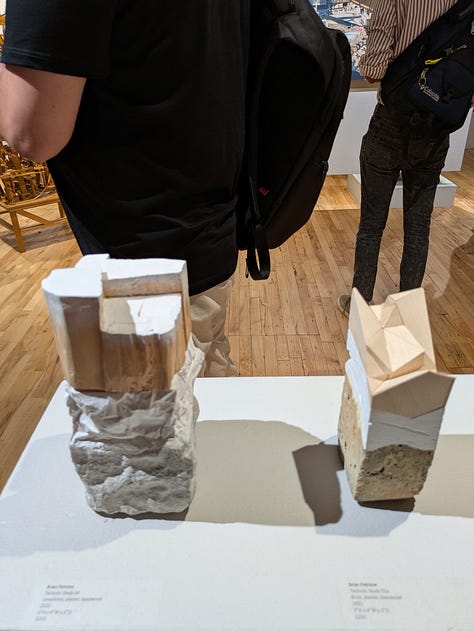
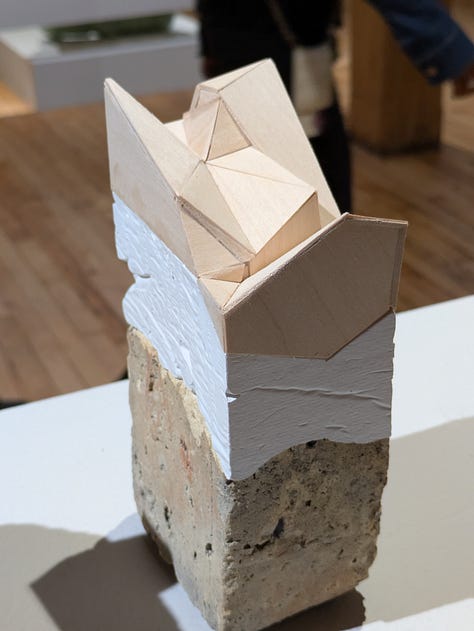
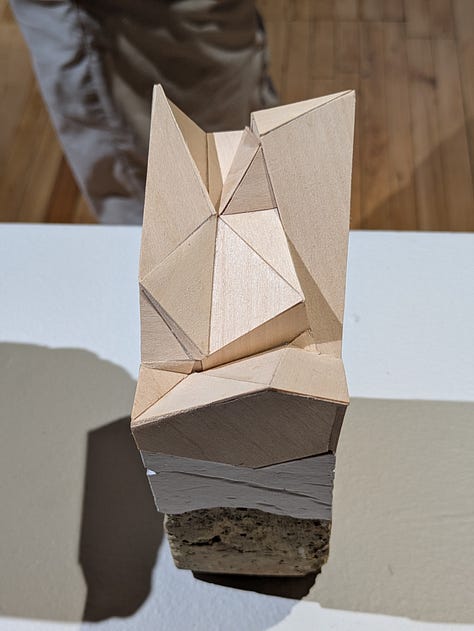
Brian Petrone made a series of small Tectonic Studies using basswood, limestone and plaster. Emergent self-organizing geometries arising out of the chaotic basso profundo energy of the faults deep underground.
As I wandered through the open studio spaces beyond the official exhibition, I came upon Project Onward’s gallery, crowded with people and art, including some folks enthusiastically belting out Reo Speedwagon’s Time for Me to Fly:
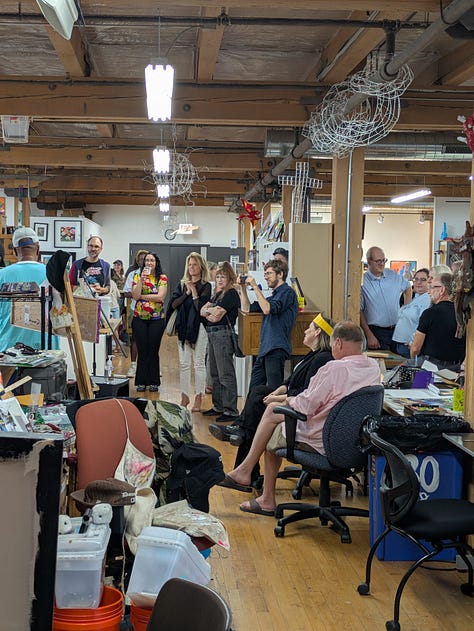
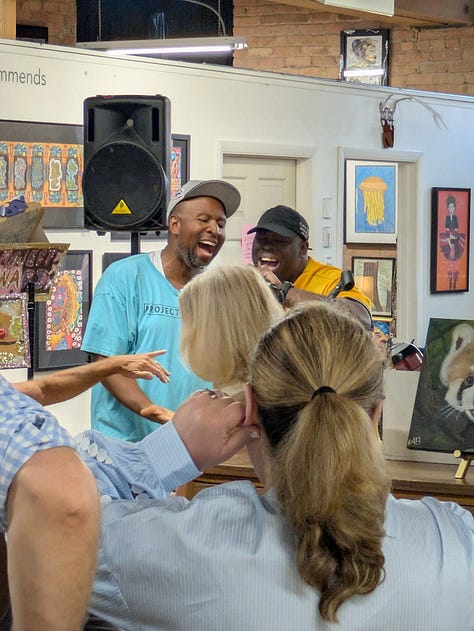
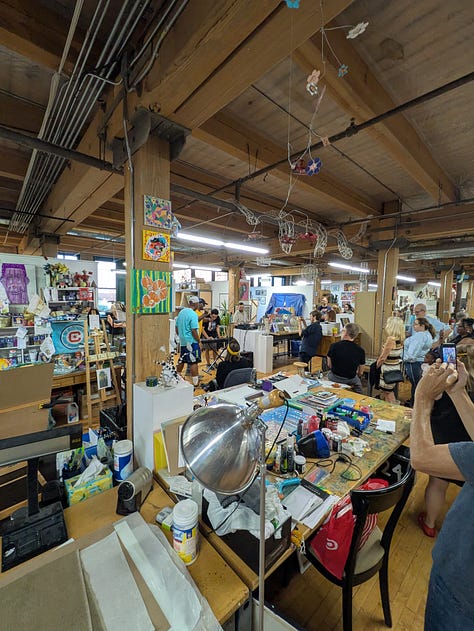
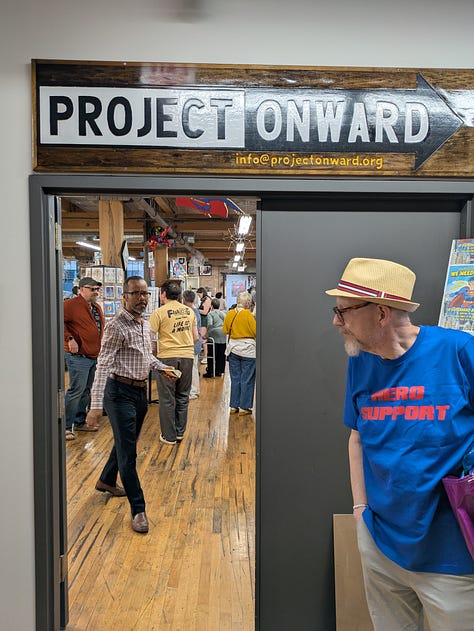
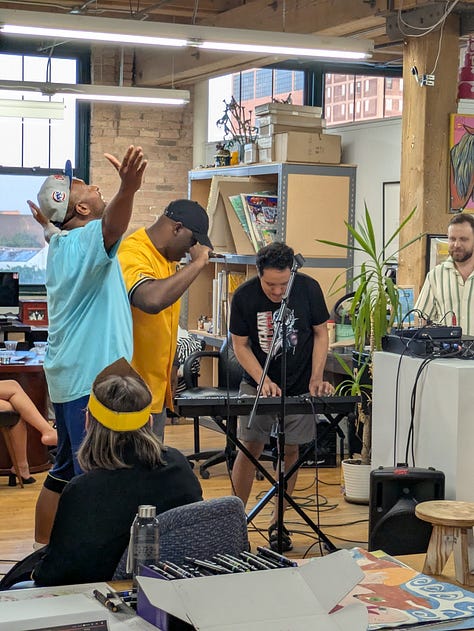
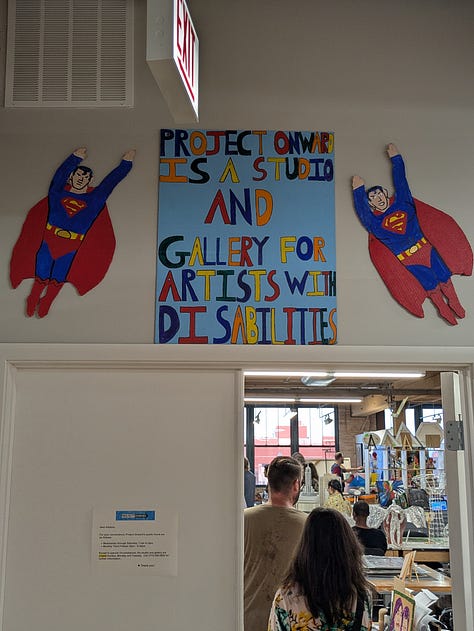
Project Onward is a non-profit organization with the mission to “provide artists with disabilities the opportunity to create their work in a safe, supportive studio environment,” and apparently to have a lot of fun. No prim gallery world niceties here, just every wall and every surface stuffed with art, and why should it be any other way?
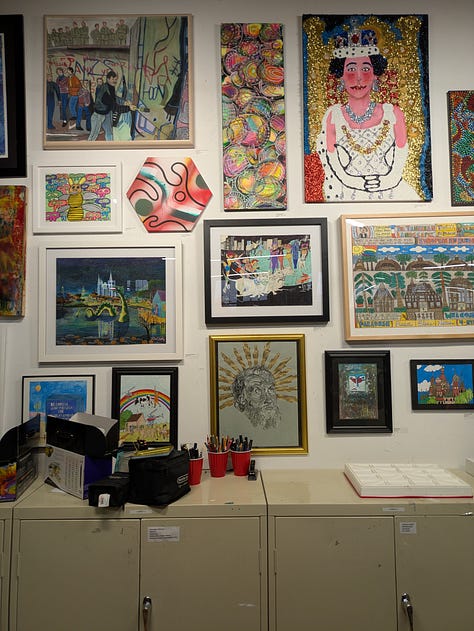
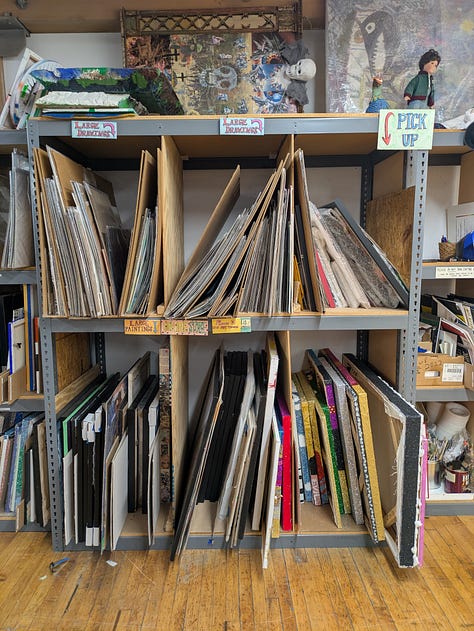
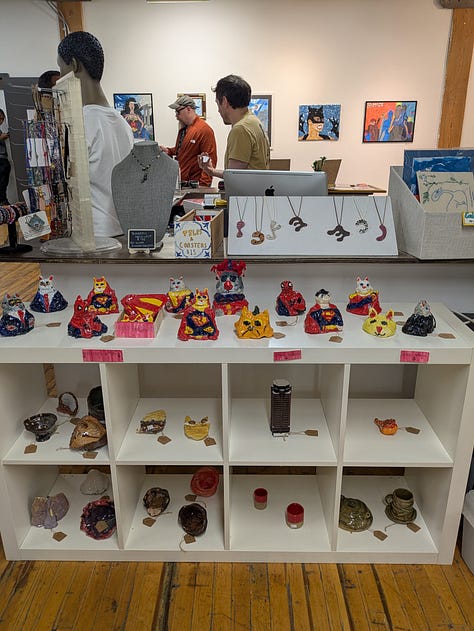
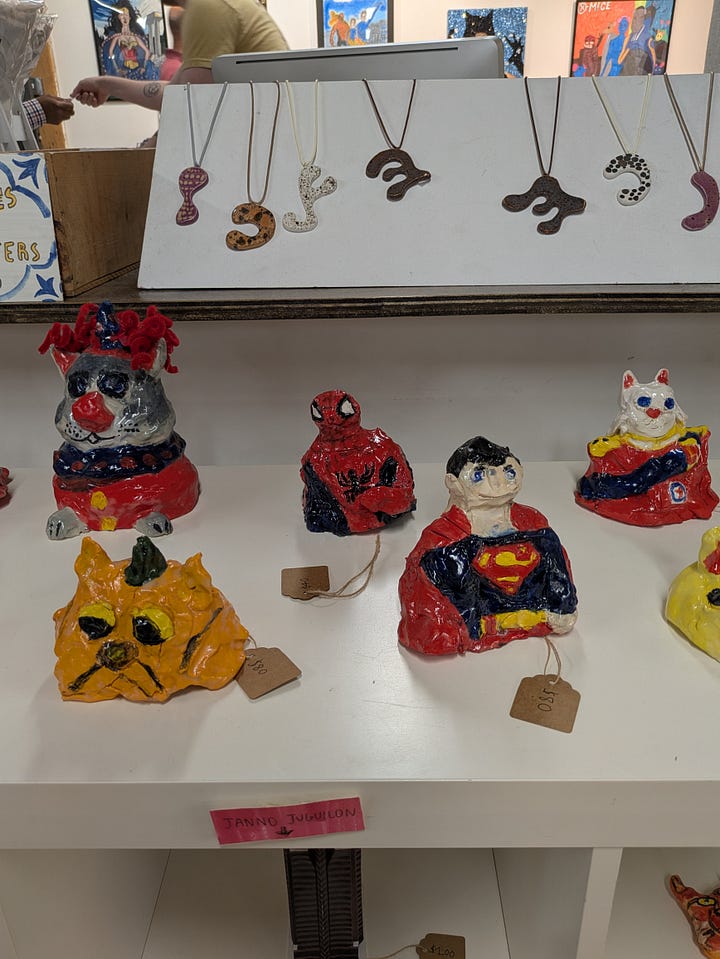
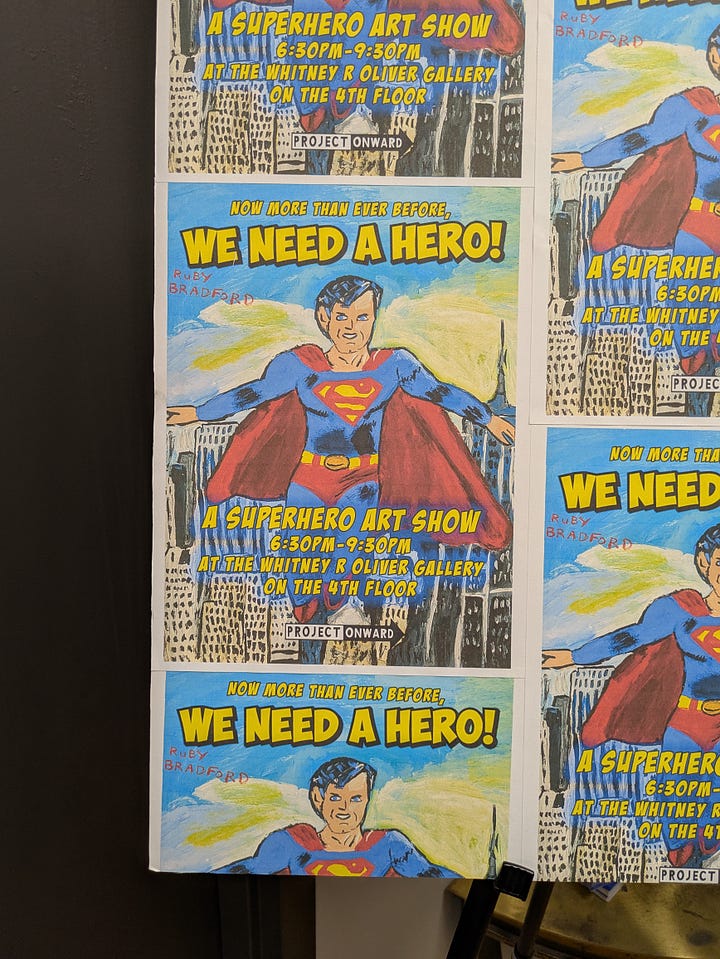
“The Landscape is Changing” remains up until September 5th.
The Zhou B Art Center held the opening of “We Built This: Making Through Migration,” a show that endeavors to illustrate how artists reflect the experience and perception of immigrant culture and other hybrid outsider identities.
I immediately fell in like with the work of Kira Dominguez Hultgren, who frames traditional craft practices with efficient and merciless takedowns of egos and assumptions in and out of the art world, extending to and through immigrant cultures themselves:
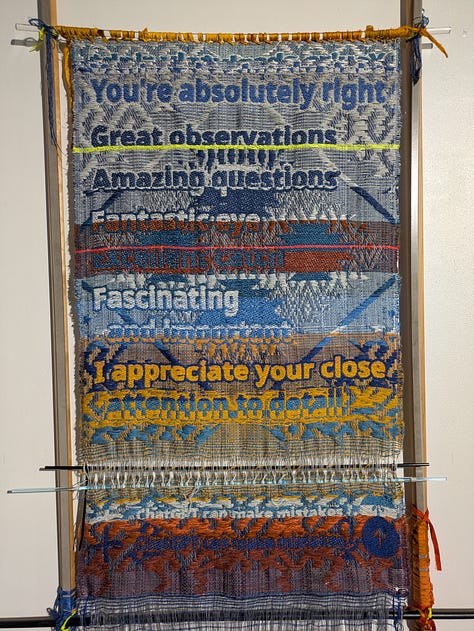
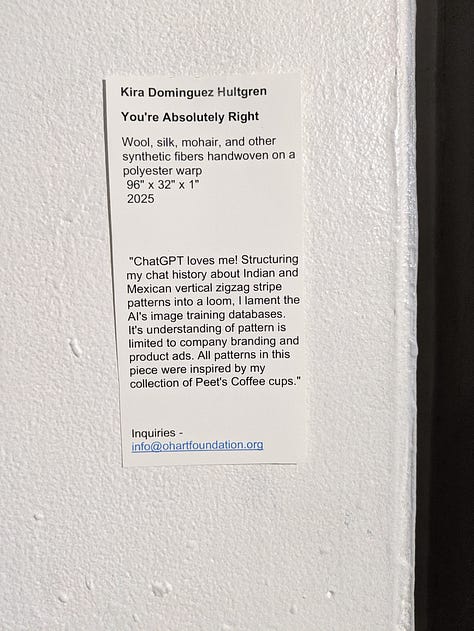
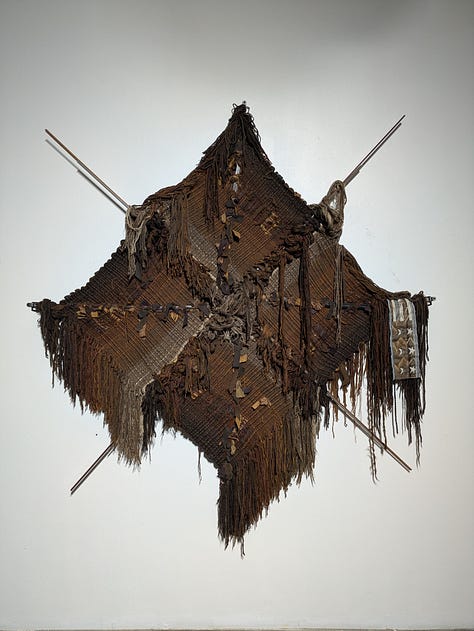
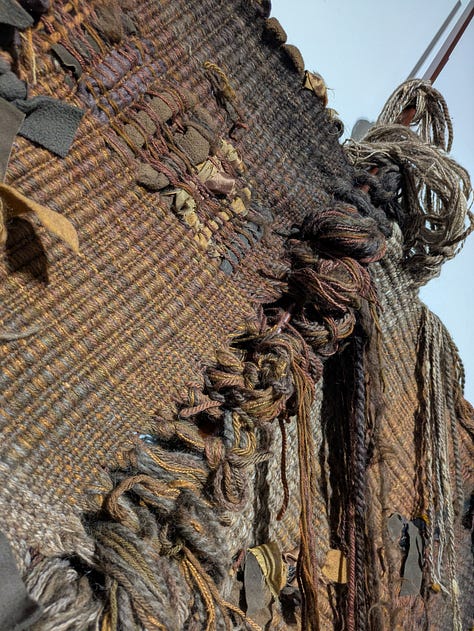
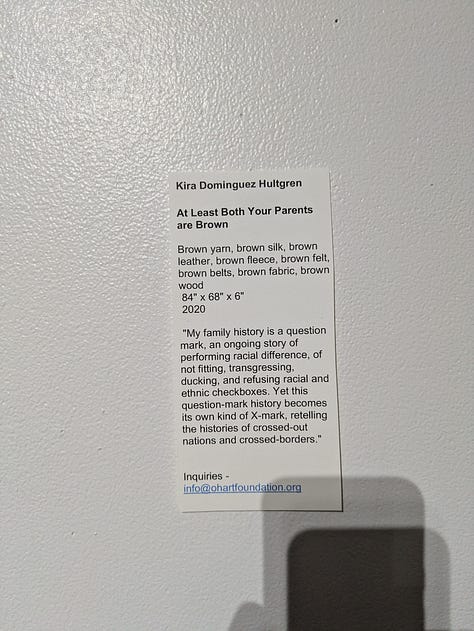
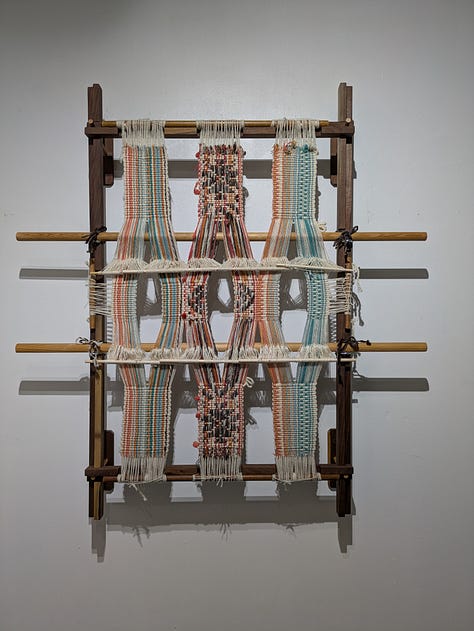
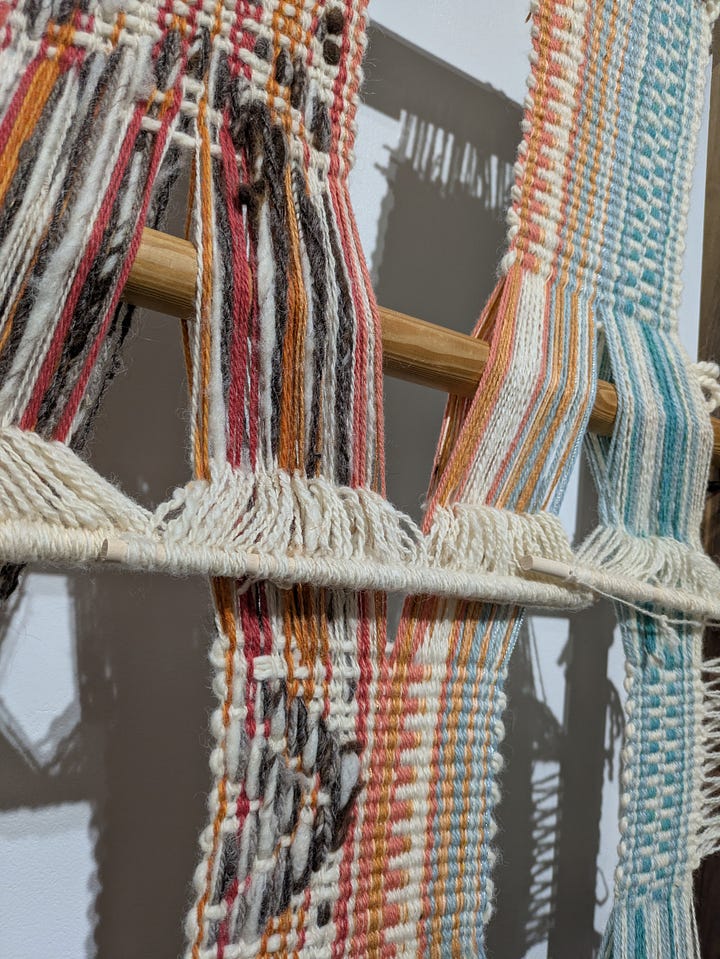
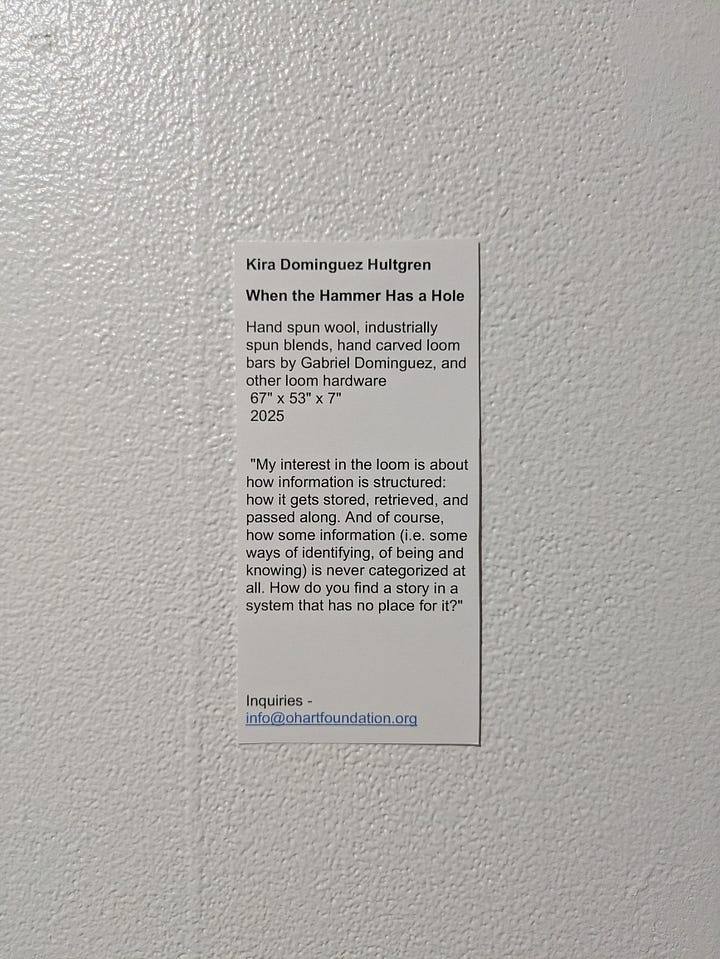
The work of Carina Yepez combines traditional quilt craft with photographic images that explicitly invoke the promises of home, comfort, safety and empathy that quilt blankets implicitly bring with them, daring the traditional craft world to enwrap everyone, and satisfy the longings its practice stirs.
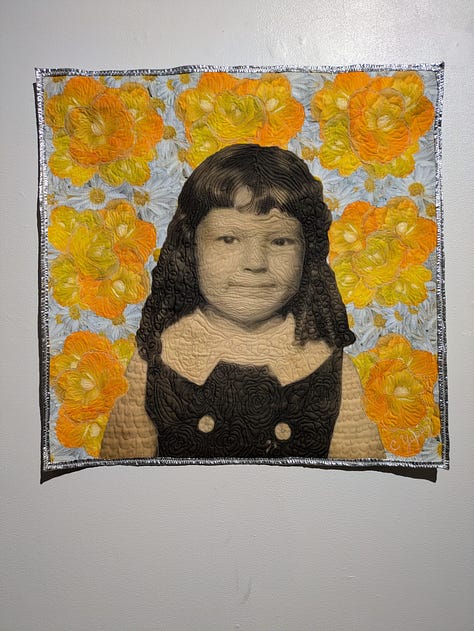
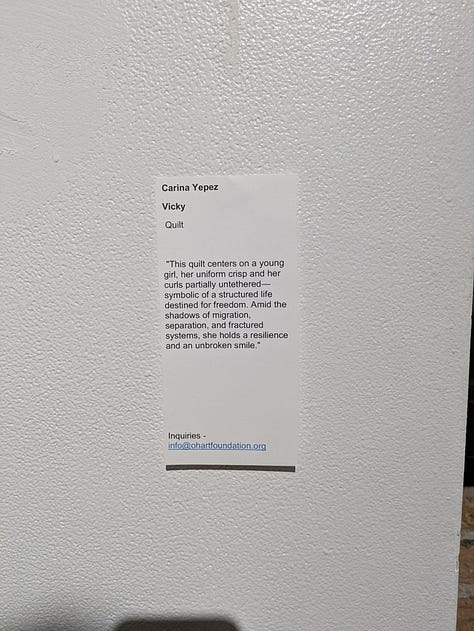
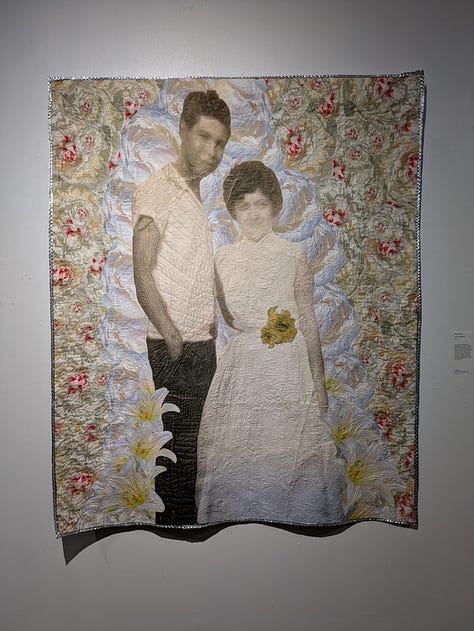
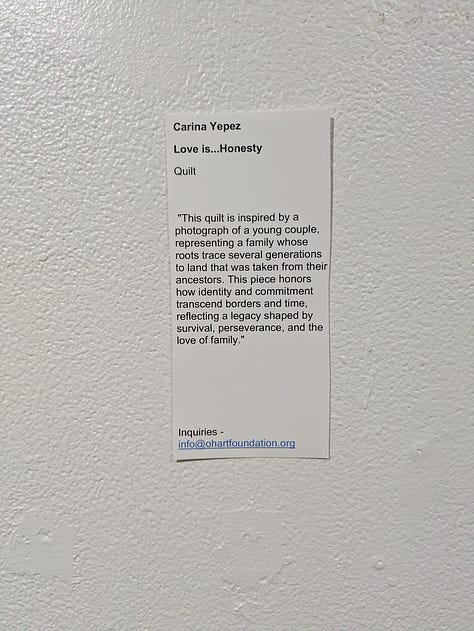
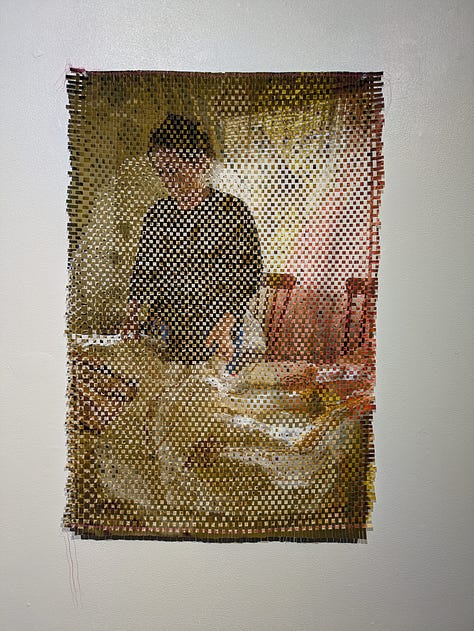
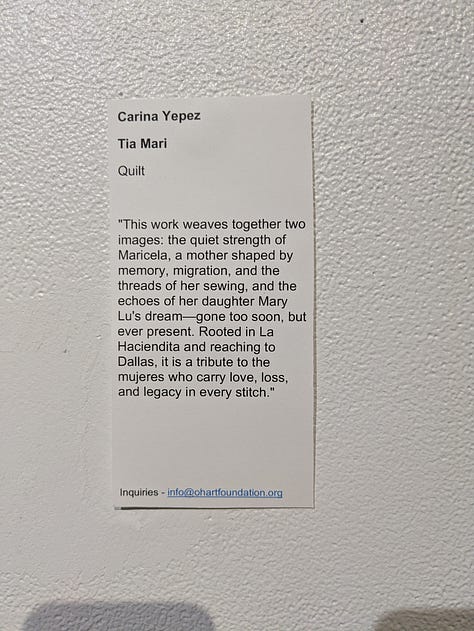
“We Built This” is up until September 14th.
The Heritage Museum of Asian Art has an exhibition titled “Chinese Lotus Shoes: Exploring the Cultural Prestige of Footbinding in Imperial China”
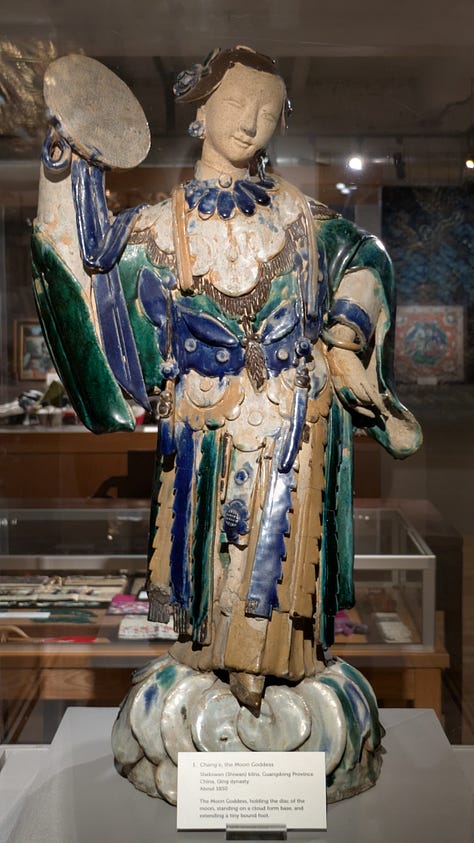
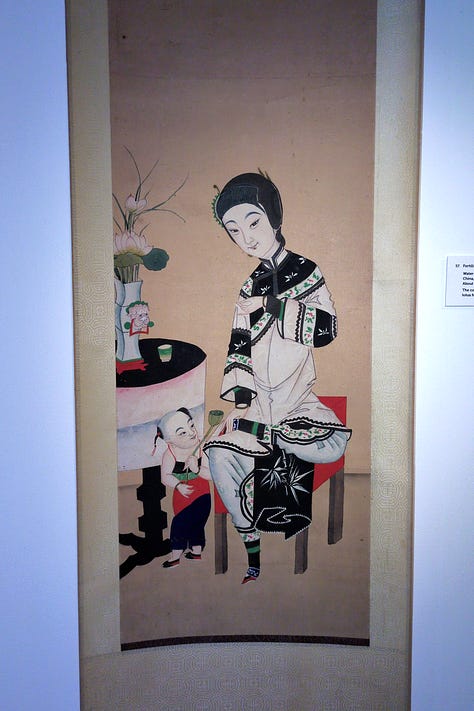
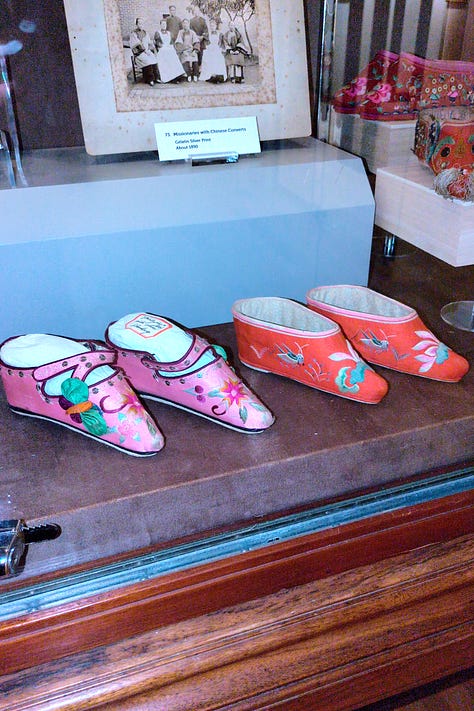
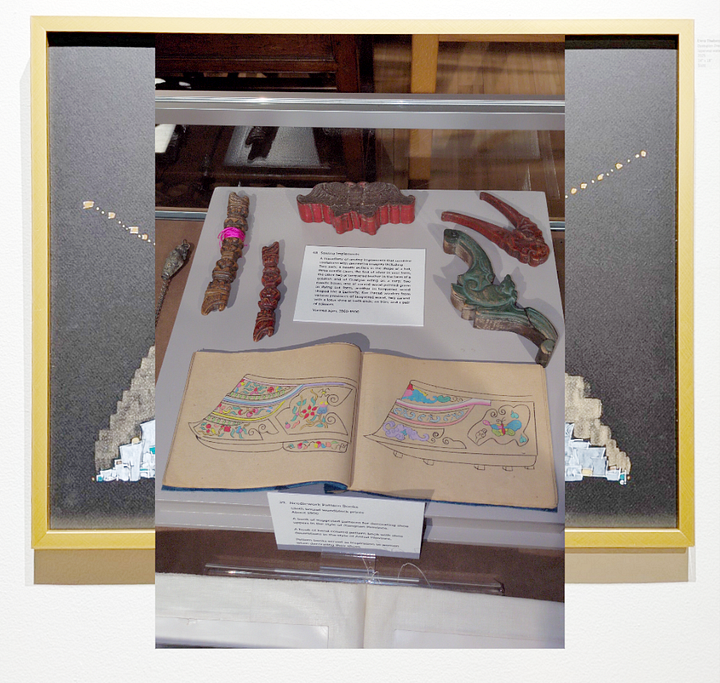
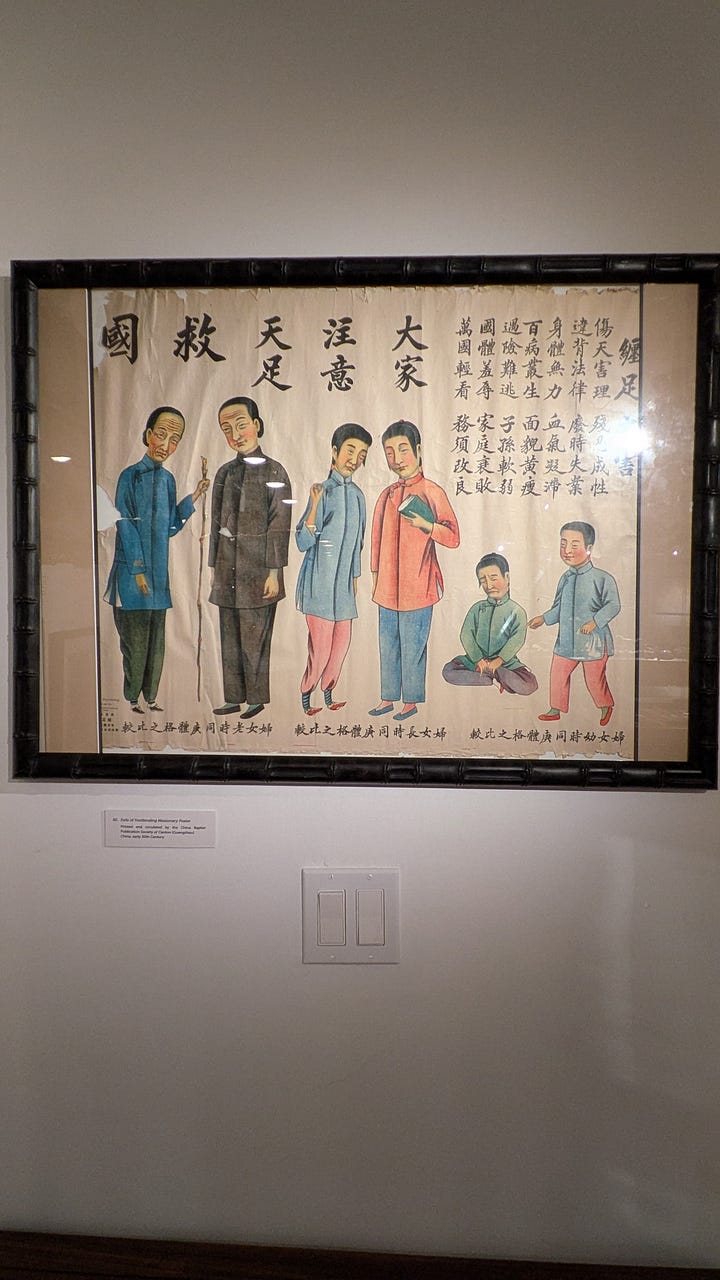
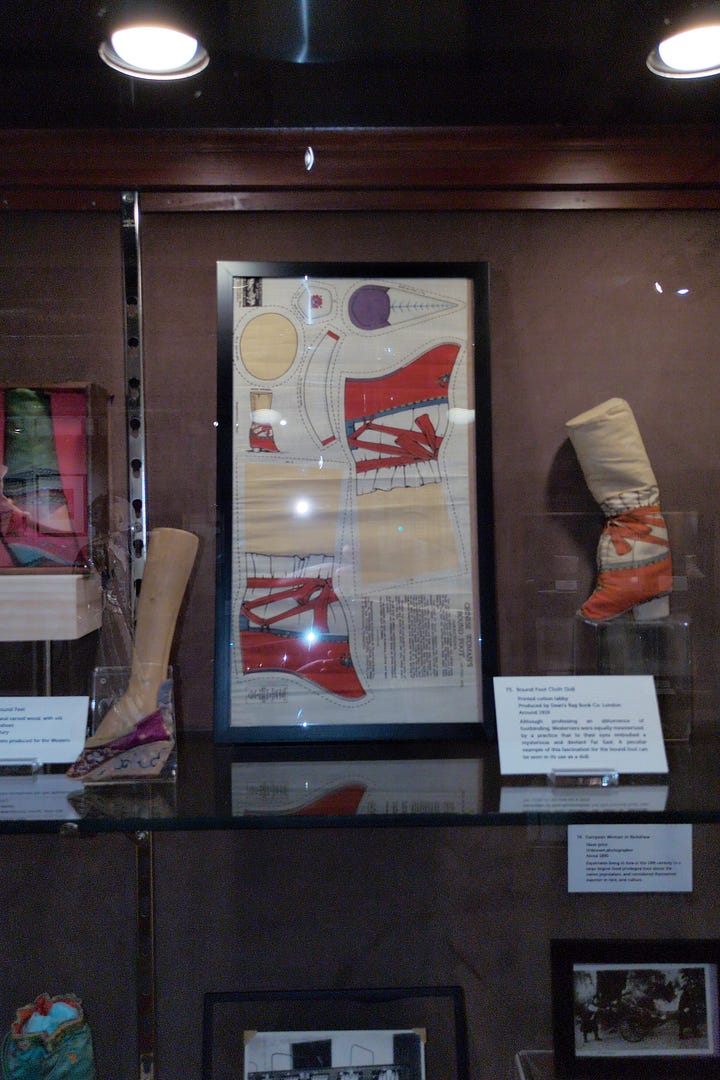
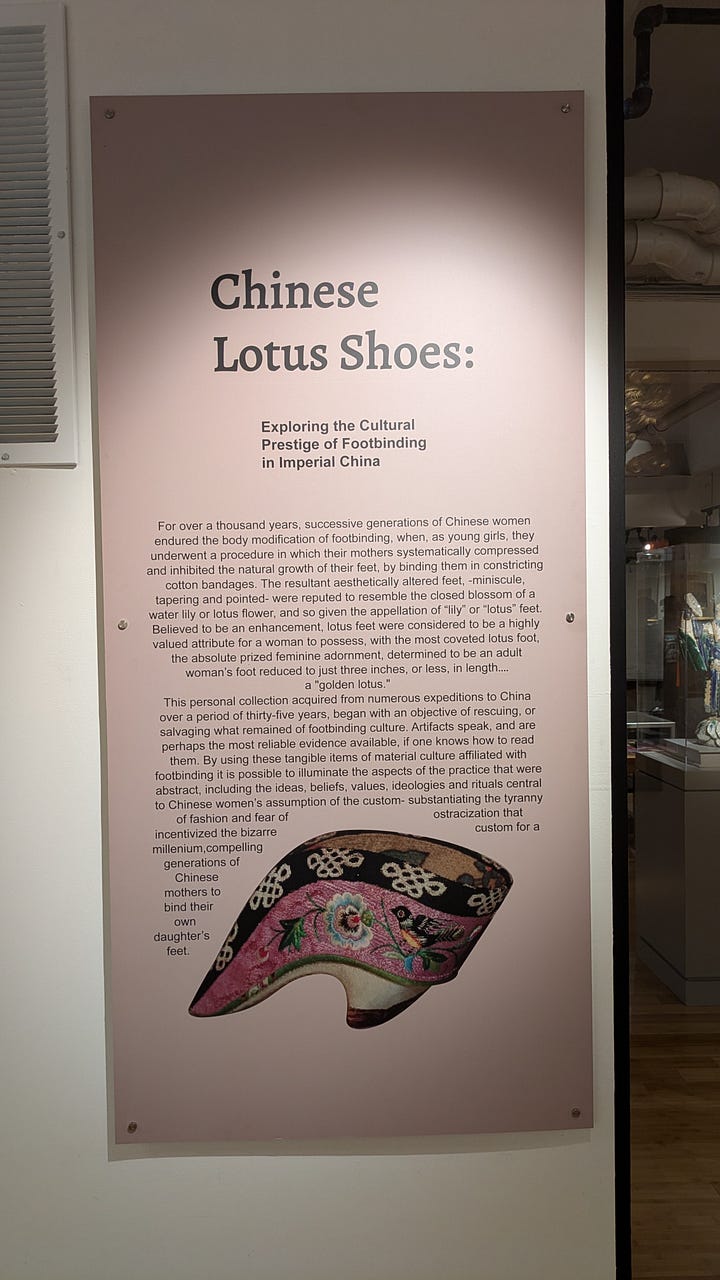
Finally, I went to Oliva Gallery first that evening, but couldn’t say long because of other commitments. A shame, because my brief tour gave me clues on what to look for elsewhere.
A bi-continental artist’s group stages a yearly show alternating between Chicago and Berlin called “The Ocean Between.” Show number VIII, titled Luminosity, is centered at Oliva Gallery. Besides the gallery show, there is a program of workshops and lectures.
When I saw Lori Kaplan’s work across the room, I assumed they were digital prints, but I learned they were my first exposure to drawing implements of the evening: they’re colored pencil drawings made on pastelmat, a paper whose texture takes more material from the pencil, making the colors much richer. Her work is at the same time exacting, geometric, inspired and meditative.
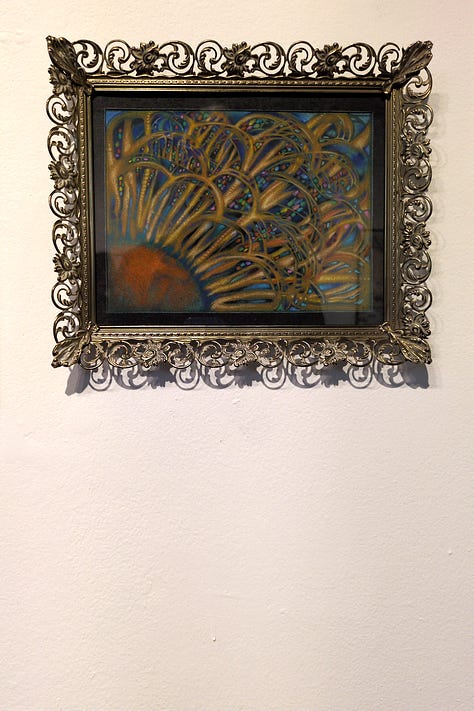
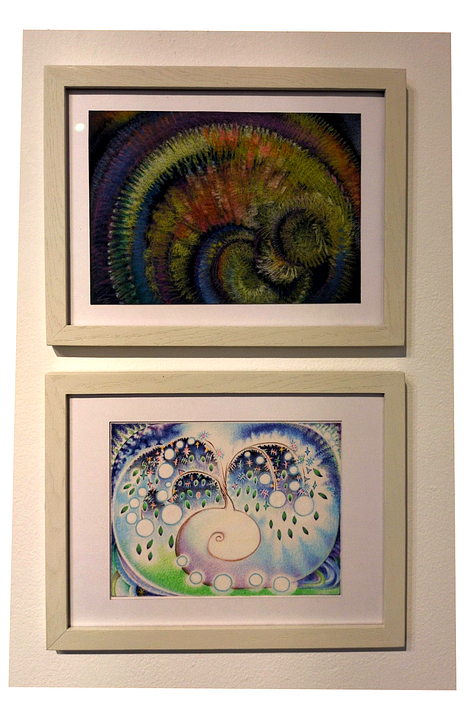
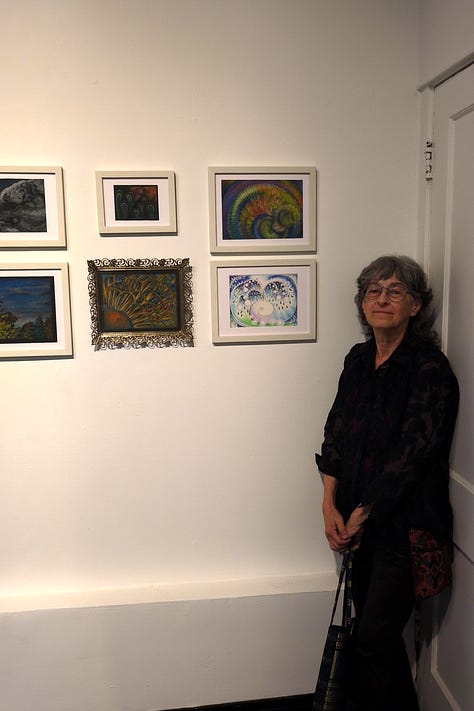
Jenny Chernansky’s Penelope’s Labor is an inkjet photo print transferred to a wood panel. The flaws created by the transfer process add layers of irony and pathos to her twenty-year weaving project as depicted in The Odyssey.
Michaela Hanemann showed me the evening’s first imposition of geometry on natural forms (or vice versa), suggesting something latent or Platonic enmeshed with the obvious.
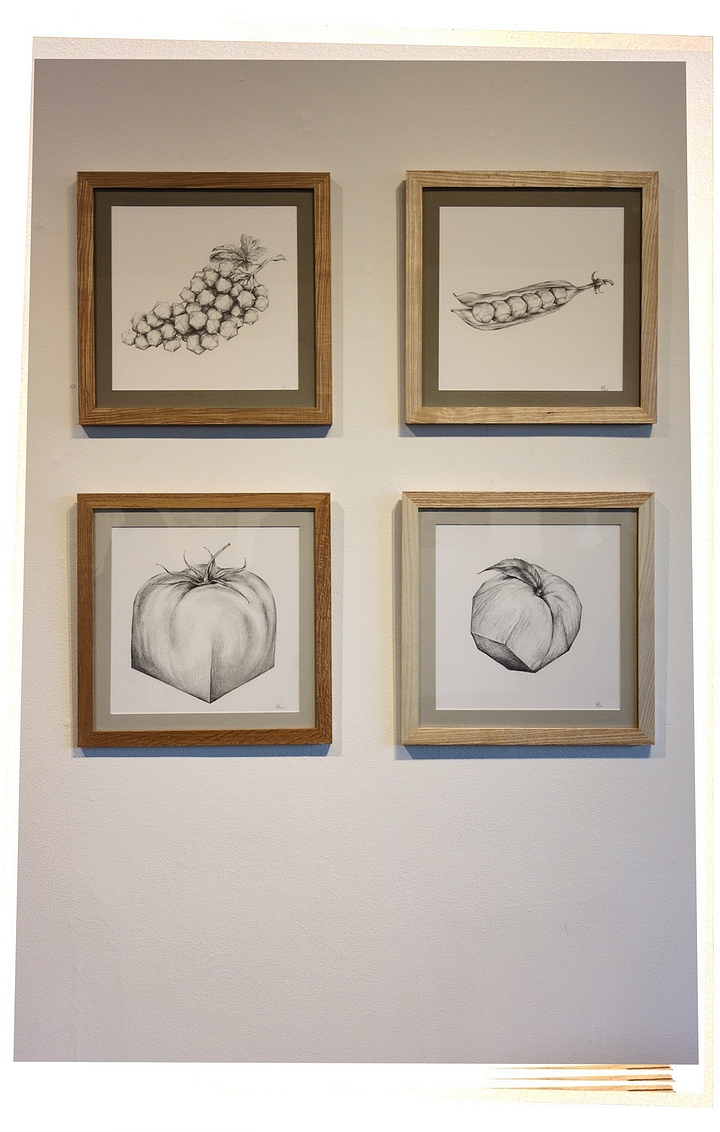
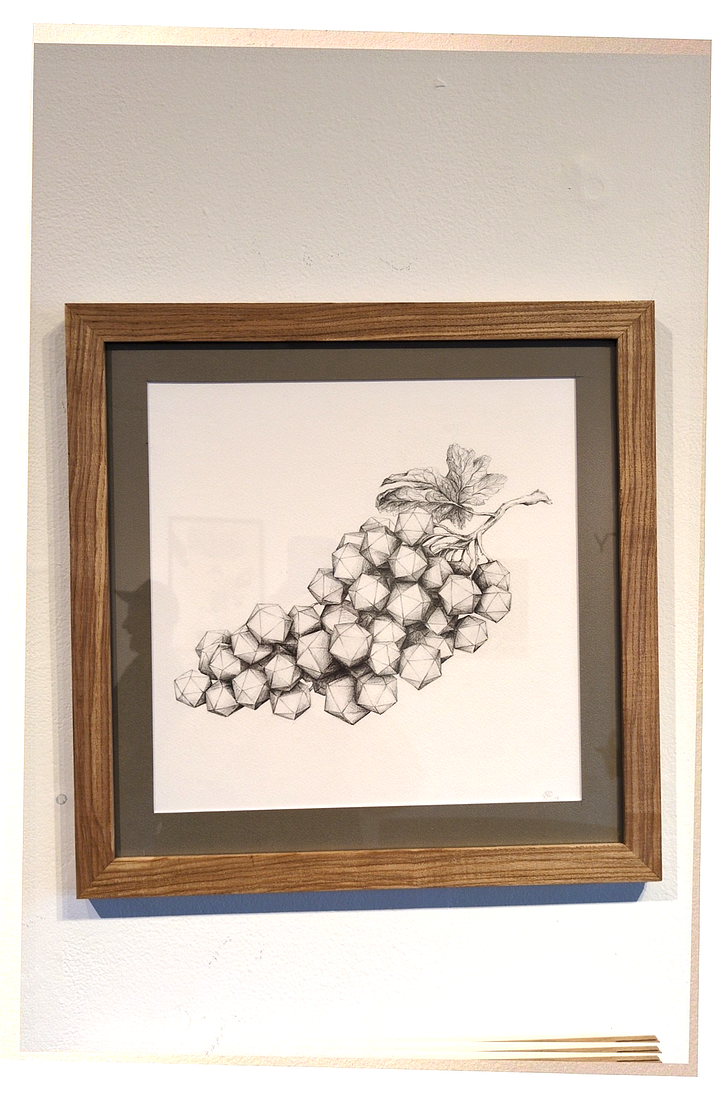
In Logan Square, gallery views you:


